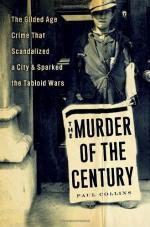|
This section contains 6,250 words (approx. 21 pages at 300 words per page) |

|
SOURCE: “Popular Culture and Public Taste” in The Gilded Age: Revised and Enlarged Edition, edited by H. Wayne Morgan, Syracuse University Press, 1970, pp. 275-88.
In the following essay, Roberts reflects on the Gilded Age as an era of popular aesthetic interest, wherein high and low-brow culture interacted to create a distinctly American fiction, journalism, theatre, lyric, and decor.
Popular culture in the hectic and colorful era that followed the Civil War encompassed diverse media. The daily newspaper, enriched with wire service news, the mass revival meeting, the Chautauqua lecture, and the traveling theater troupe all reflected American ideas and aspirations. Publicly accepted painting, sculpture, literature, music, and theatrical entertainment reflected social values. Audiences listened patiently while the actor Joseph Jefferson, the revivalist Dwight Moody, and the lecturer Russell Conwell each said something that touched national tastes.
The traditional values of Western Europe flavored this culture, whatever its variations...
|
This section contains 6,250 words (approx. 21 pages at 300 words per page) |

|


